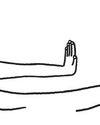
Ah, the world! Oh, the world!
—“Moby-Dick.”
David Gruber began his almost impossibly varied career studying blue-striped grunt fish off the coast of Belize. He was an undergraduate, and his job was to track the fish at night. He navigated by the stars and slept in a tent on the beach. “It was a dream,” he recalled recently. “I didn’t know what I was doing, but I was performing what I thought a marine biologist would do.”
Gruber went on to work in Guyana, mapping forest plots, and in Florida, calculating how much water it would take to restore the Everglades. He wrote a Ph.D. thesis on carbon cycling in the oceans and became a professor of biology at the City University of New York. Along the way, he got interested in green fluorescent proteins, which are naturally synthesized by jellyfish but, with a little gene editing, can be produced by almost any living thing, including humans.
While working in the Solomon Islands, northeast of Australia, Gruber discovered dozens of species of fluorescent fish, including a fluorescent shark, which opened up new questions. What would a fluorescent shark look like to another fluorescent shark? Gruber enlisted researchers in optics to help him construct a special “shark’s eye” camera. (Sharks see only in blue and green; fluorescence, it turns out, shows up to them as greater contrast.) Meanwhile, he was also studying creatures known as comb jellies at the Mystic Aquarium, in Connecticut, trying to determine how, exactly, they manufacture the molecules that make them glow. This led him to wonder about the way that jellyfish experience the world. Gruber enlisted another set of collaborators to develop robots that could handle jellyfish with jellyfish-like delicacy.
Esta historia es de la edición September 11, 2023 de The New Yorker.
Comience su prueba gratuita de Magzter GOLD de 7 días para acceder a miles de historias premium seleccionadas y a más de 9,000 revistas y periódicos.
Ya eres suscriptor ? Conectar
Esta historia es de la edición September 11, 2023 de The New Yorker.
Comience su prueba gratuita de Magzter GOLD de 7 días para acceder a miles de historias premium seleccionadas y a más de 9,000 revistas y periódicos.
Ya eres suscriptor? Conectar

BADDIE ISSUES
\"Wicked\" and \"Gladiator II.\"

LET'S MAKE A DEAL
\"Death Becomes Her\" and \"Burnout Paradise.\"

ANTI HEROES
\"The Franchise,\" on HBO.

FELLOW-TRAVELLERS
The surprisingly sunny origins of the Frankfurt School.

NOW YOU SEE ME
John Singer Sargent's strange, slippery portraits of an art dealer's family.

PARIS FRIEND - SHUANG XUETAO
Xiaoguo had a terror of thirst, so he kept a glass of water on the table beside his hospital bed. As soon as it was empty, he asked me to refill it. I wanted to warn him that this was unhealthy - guzzling water all night long puts pressure on the kidneys, and pissing that much couldn't be good for his injury. He was tall, though, so I decided his insides could probably cope.

WILD SIDE
Is Lake Tahoe's bear boom getting out of hand?

GETTING A GRIP
Robots learn to use their hands.

WITHHOLDING SEX FROM MY WIFE
In the wake of [the] election, progressive women, who are outraged over Donald Trump's victory at the ballot box, have taken to social media with public, vengeful vows of chastity. - The Free Press.

DEADLINE EXTENSION
Old age, reborn.